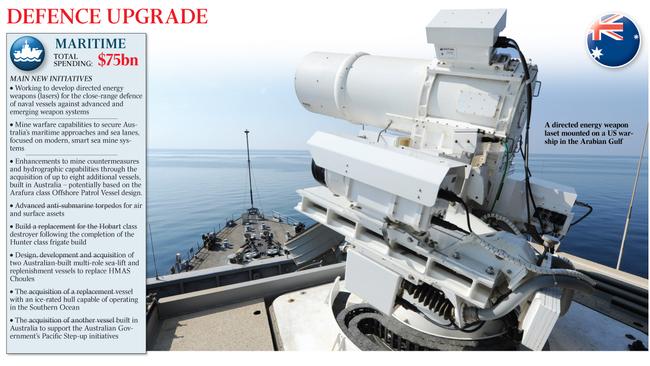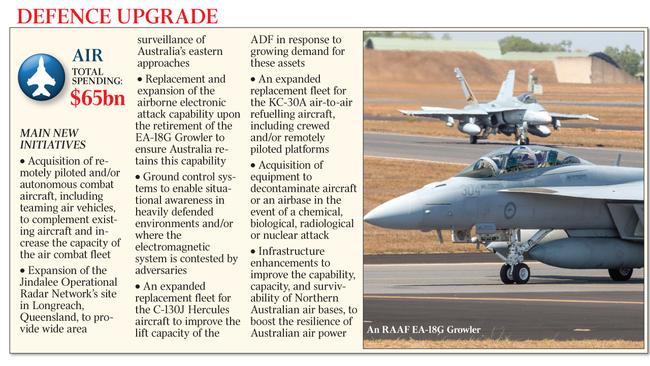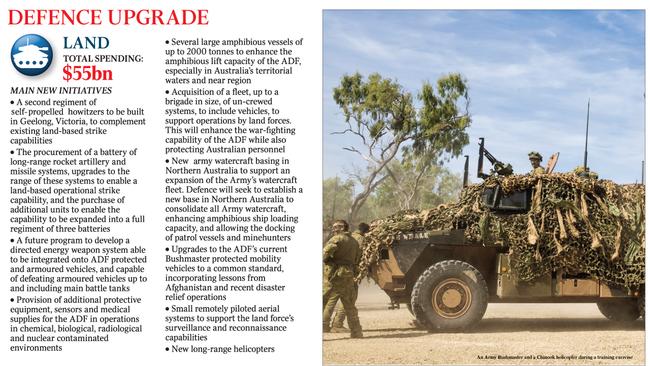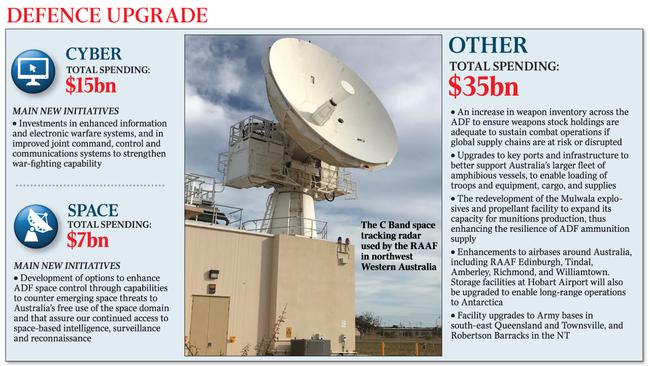Defence boost still may not be enough to cover plans
Experts are questioning whether the $270bn defence funding envelope will be enough to deliver the full range of promised capabilities.

Australia’s defence spending could hit 2.5 per cent of GDP within a decade under the federal government’s new force structure plan, but experts are questioning whether the $270bn funding envelope will be enough to deliver the full range of promised capabilities.
Strategic experts applauded the new plan, saying it acknowledged for the first time that Australia must be able to deter attackers in its own right, with new air, sea and land-based missile systems.
Opposition defence spokesman Richard Marles said Labor also supported the strategic shift in response to a “much more complex” array of challenges.
But he warned that the opposition would hold the government to account on defence promises, including the delivery of the troubled $90bn Future Submarines.
Australian Strategic Policy Institute senior analyst Marcus Hellyer said the government’s investment plan appeared to shrug off the impact of the coronavirus recession, with defence funding to follow the upward trajectory established in the 2016 white paper.

“If you start to take more pessimistic views of GDP growth, it is conceivable that in a prolonged recession defence spending could hit 2.4 or 2.5 per cent of GDP, as the GDP pie grows more slowly than the defence budget,” Dr Hellyer said.
However, he said there were already questions over the affordability of the promised 2016 force, “and now they’ve added more stuff to it”. “There are both new capabilities in there, and some of the (already announced) replacement capabilities are more expensive than previously indicated,” he said.
Dr Hellyer cited the nine Future Frigates, which were previously budgeted at $35bn but had risen in cost to $45bn, according to the revised force plan; and new infantry fighting vehicles budgeted at $10bn-$15bn, which were now forecast to cost $18bn-$27bn.
Australian National University National Security College head Rory Medcalf said previous white papers had been vague on whether Australia would strike out if it was threatened by another nation.
“The difference here is it is saying that deterrence is the primary business of the Australian Defence Force, and it is outlining the beginnings of a shopping list to equip the defence force to do that,” Professor Medcalf said.

He said the decision to purchase long-range anti-ship missiles would improve the lethality of the nation’s fighter jets, while promised undersea, space and radar sensors would give Australia an independent targeting capacity it had not previously had.
“We have relied very heavily on the Americans in the past for targeting,” Professor Medcalf said.
“Here we are beginning to talk about Australia operating independently in high-intensity combat, even though at the moment we don’t envisage that happening without the Americans.
“It just gives us a bit more leeway to defend ourselves over a longer period of time before the alliance would come in.”

International Institute for Strategic Studies senior fellow Euan Graham said the new strategy and force posture plans recognised the ADF was not currently configured to provide deterrence as a standalone force. “We have not had to deliver deterrent effects in military terms for a very long time,” he said. “That is the sea change behind all the investment in capability and geographical focus on this part of the region.”
Australian Strategic Policy Institute defence program director Michael Shoebridge said the government had acknowledged the urgency of the strategic challenges facing the nation, putting the pressure on Defence and industry to deliver new capabilities quickly.

“The accountability to deliver needs to be strong because the implementation needs to be fast,’’ he said. “That’s a big contrast to 2016. Back then we were talking about the ‘future force’. This is much more ‘we need it now’.’’




To join the conversation, please log in. Don't have an account? Register
Join the conversation, you are commenting as Logout